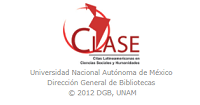Editorial position and commitment of the journal
Contribute to the diffusion of knowledge in the fields of childhood and youth studies: Towards the consolidation of field of study that is trans-disciplinary, contextual and ethically and politically committed to social change that is been developed in Latin America and the Caribbean.
The construction of knowledge in the fields of childhood and youth studies faces significant challenges: from which theoretical, epistemological and methodological frameworks should we address childhood and youth today in order to adequately express the inexhaustible plurality of ways of being and existing? What academic praxis and other knowledges favor the comprehension of child and youth worlds in which residual structures of participation, education and socialization cohabit with emerging practices of political action, interactions, relationships with technologies, new consumer habits and creative ways of subjectivization and communication? How can we address the living conditions of children and young people that in contexts such as Latin America and the Caribbean are affected by diverse processes of social exclusion, economic and vital precariousness, inequalities, injustice, oppression and violence that have deep historical roots and considerable levels of normalization? How can we transcend not just engaging in theoretical production but also concerning ourselves with the necessary comprehension of realities to build new worlds and possibilities of dignified life, not for children and young people but with them, based on their perspectives, meanings, voices and forms of expression?
There is a need to advance, as has been occurring, towards critical, analytical, decolonial and compressive transdisciplinary approaches that allow us to understand and intervene in the complexities of the social world and the concrete realities of childhood and youth. Certainly, we know that the constitution of childhood and youth as “fields of knowledge” has been developed through significant contributions made by distinct disciplines and nodes of reflection. The notion of childhood, as Sandra Carli (2011) explained, has been configured through varied contributions from the fields of psychoanalysis, sociology, law, social work, literary studies, cultural and communications studies, anthropology, history and others. In addition, childhood and youth studies also include a whole range of imaginaries and representations that on occasion circulate in a contradictory manner, including “minors”, violated, persons in need of protection, objects of intervention and care, subjects of rights, just to mention some of the symbolic places in which children and youth have been positioned. However, despite the fact that there are many approaches, as well as varying themes and problems within this field, the trends in social and cultural research related to the study of childhood and youth are moving towards approaches that are less and less homogenized, abstract and closely tied to disciplines and are increasingly plural, contextual and relational.
The multiple forms of being a child and the complexities of children’s experiences have led to forms of research that are more flexible and open, both in theoretical as well as methodological and epistemological terms, that transit along the meeting points of disciplines and resist reductionist approaches or perceptions of children as second category citizens and subjects without agency. Explorations by academics in the field of childhood studies have questioned the supposed universal and ahistoric character of childhood, the reduction of children to being depositories of traditions or filled by the teachings of adults. These explorations have also challenged the exclusively biological readings of childhood as well as those focused on vulnerabilities and what children lack. Instead of this approach, and based on situated or local approaches (without calling them specific), childhood has been thought of as a set of socio cultural constructions that are immersed in material structures and interweaved meanings, which define the possibilities of certain movements, determine life trajectories and consolidate practices. At the same time this approach also provides room for other movements to exist, doesn’t exhaust agencies nor is it situated beyond historical experiences.
This has also occurred in the field of youth studies. It is important to remember that youth, as a concept or social category, has been addressed from different theoretical positions and has been associated with different characteristics that, depending on the approach, define what it means to be young in an historical moment and in a specific society. In the prolific development of youth studies, distinct forms of knowledge have disputed the meaning of “youth” through different proposals and perspectives that include pedagogical, anthropological, sociological, critical and political approaches, among others. In this sense, the subjects considered as Young people have been questioned by academics, but also by other areas of society (institutions, cultural industries, communication outlets, etc.) through discourses that configure multiple images or imaginaries and are guided by diverse intentions. In this way, young people have been discussed as subjects that are immersed in a period of transition, or in search of their identity, subjects that represent the motor of social change, vulnerable subjects that are prone to risk and as subjects that are naturally dangerous and mal-adjusted, to use just some of the notions of young people that have been identified in different studies and literature reviews (Arango, Escobar & Quintero, 2008, Pérez-Islas, 2008, Muñoz, 2010, Gómez- Esteban, 2011).
Some of the most cited discourses, in terms of what has been contributed to a particular way of thinking or construction of the concept of youth, have included the following: 1) The psychobiological or evolutionary discourse that from an age-based perspective considers youth as a stage of linear, unambiguous, continuous, progressive and accumulative human development, which is characterized by certain pre-determined psychobiological and social risks and associated with the notions of transition and incompleteness. 2) The social policy discourse that oscillates between representations of young people as “the future of society”, strategic actors of development and subjects of rights to negative visions that associate young people with being at-risk, dependent, lacking autonomy and even as potential delinquents (Gómez-Esteban, 2011). 3) The pedagogical discourse that refers to youth as a stage of life for education and exploration, for dedicating a period of time (of social moratorium) exclusively to study, postponing economic responsibilities and demands that are “linked to full entry into social maturity: to form a home, to work, to have children” (Margulis & Urresti, 1998, p. 4). 4) The social sciences discourse that brings together a range of positions including culturalism from the United States, generations theory, a functionalist approach, the complexity and constructionist perspectives and many more. 5) The cultural studies discourse, which is generally considered to have originated in the Birmingham School (without being reduced to this) and is associated with research related to youth sub-cultures as forms of symbolic resistance by dominated groups against dominant groups (Pérez-Islas, 2008).
Considering this panorama, and taking into account the warning made by Reguillo (2003) to not make the mistake of thinking of youth as a temporal, homogenous, ahistoric or fundamental continuum, it is clear that social and cultural research in the field of youth studies has also shifted towards places that problematize the most traditional conceptualizations and use constructivist, critical or complex discourses in which the youth condition is not just a “simple stage in a biological-biographical sequential line, but a socio cultural construction that is historically defined (Rossi, 2006, p. 13). As stated by Valenzuela (2005), “youth is an empty concept outside of its historical and sociocultural content” (p. 19), because it varies depending on the historic moment in which it occurs, certain markers of identity (social class, place of origin, ethnicity, gender, sexual orientation, etc.), its relationship with what is defined as “non-youth” and even depends on elements such as life expectancy, which is mediated by socio-economic contexts. In this sense, real life subjects of flesh and bone and their identities as young people are much more related to sociohistorical, polysemic, relational, changing and transitory constructions than with fundamental or crystallized concepts exclusively defined by physical-biological factors.
Based on this, it can be affirmed that the production of knowledge in the fields of childhood and youth have faced at least three large shifts that are important to evidence and strengthen. Firstly, these fields have undergone a transition from production focused on disciplines to inter and trans-disciplinary perspectives. Due to the complexities and plurality of childhood and youth experiences, the production of knowledge in these fields has increasingly advocated for readings that are supported by wide theoretical fields and plural methodological strategies, instead of being restricted to just one discipline or that privilege the paradigm of monoculture and fragmentation. This doesn’t result in a dismissing of knowledge that is derived from disciplinary fields such as psychology, sociology, anthropology or history, nor does it consider that a trans-disciplinary approach is necessarily more complete, thorough or “superior”.
On the contrary, this involves a different way of approaching questions and problems that are related to the experiences in the lives of children and young people that respond to the now classic but still pending call to “open up the social sciences” (Gulbenkian Commission, 1996). The historic configuration of areas of social life (economics, society, culture, politics) and temporal dimensions (past/ present), together with the division of work within the social sciences that are attributed to one discipline (economics, sociology, anthropology, political sciences, history), and that each of these spheres are ontologically thought of as different to others, causes tension when we address topics related to childhood and youth. Subsequently it is fundamental that we engage in readings that “cross boundaries” and transcend the sense of security provided by the disciplines. Beyond the “monopolies of knowledge” or fields that are inaccessible for the rest of society and “reserved for people with a certain university degree” (Gulbenkian Commission, 1996) are the practices, meanings, inequalities, subjectivities and agencies of children and young people that invite us to promote views that don’t segment reality to study them, and that don’t automatically assume that one approach or discipline (psychological, economic, socio-historical, cultural, etc.) is better than others to understand this field.
It is important to point out that the transdisciplinar approach, as a feature of the knowledge constructed in the fields of childhood and youth studies, is not a starting point based on combining or ignoring disciplines. It is in fact a trend and a possible horizon for working with children and young people in which dialogue and interactions between varied theoretical traditions, both disciplinary as well as trans-disciplinary (communication studies, cultural studies, gender studies, decolonial studies, among others), are undoubtedly fruitful. The organization of knowledge around specific objects of study or specialist knowledge is subverted when we submerge ourselves in the ways of life of children and young people. We see that the artistic, educational, communicative, cultural, political, economic and historical elements of their lives involve corporalities and subjectivities that escape explicative reductions and lead to creatively coordinated theories, methodologies and techniques that delve into different fields of knowledge and action.
The second shift in the fields of knowledge of childhood and youth is the move from universal and homogenizing approaches to situated and contextual approaches. Another of the trends in these fields is that childhood and youth studies are evolving towards perspectives that place a greater focus on the mediations of history, the social fabric of relations that form part of identified problems and the specificity of contexts. It is completely different to be a child or young person in the global north as it is in the global south, in marginalized and precarious contexts compared to high levels of consumerism and acquisition capacity, between rural and urban zones, and in environments represented as indigenous, afro-descendent or mixed race. The notions of child and Young person are filled with diverse and sometimes contradictory content in accordance with the current time and place and the concrete contexts in which children and young people live. At the same time these notions can also involve change, recognition, hopelessness, precariousness, violence, creativity, submission, dreams, resistance, aesthetics, politics, transgression, exploration, indignation, dissatisfaction and others.
In this sense, the configuration of childhood and youth as fields of knowledge has implied the production of subjects categorized as children and young people through mechanisms of classification that are biological, psychological, demographic and political. This involves a double process in which the concepts of childhood and youth are constructed through discourse, while these subjects are constructed both socially and historically in relation to existing discourses and categories of thought (Castellanos, 2011). Without doubt, while the production of knowledge in the fields of childhood and youth have contributed not just to understanding but also to producing the subjects named as children and young people, the increasingly situated and contextual nature of these fields has overcome the generic and universal notions of “child or young person” and now incorporates the dimensions that are in dispute or are being negotiated. In determined socio-historic contexts these notions move from the dominant imaginaries that have been defined in a certain moment and placed upon groups and subjects that are “in a child or youth condition” to the own representations and experiences of agents measured through processes of self-recognition and unequal and differential identification.
In this framework it is important to emphasize that children and young people are not just associated with their age or certain imposed and fundamental characteristics, which provides motivation to consider these subjects from a relational perspective that incorporates the contextual identification of processes through which their lives occur. The youth or child condition is historical, situated and diverse and is endowed with representations, attitudes, potential, dispositions, aspirations and above all relations (of meaning, of power, of structure) in the framework of which the specific and locatable space-time characteristics of children and young people acquire meaning. As stated by Castellanos (2011) when referring to the youth condition, this can be thought of as “the crossing between directions and positions, that
like force vectors guide and locate the subject in a universe of oppositions that provide order to the social world and its sub-worlds, in terms of sub-fields, and in which the subject acts, exists and derives their social qualities” (p. 175).
To be a child or young person in relation to others and in determined circumstances and contexts, for example in the family, means that “to be young –in any social sector with or without social moratorium– is to occupy this place in intra-institutional interaction, characterized by co-existence with other generations” (Margulis & Urresti, 1998, p. 8).
In addition, the features of childhood and youth can’t be defined without considering their relation with the representations that define “what isn’t part of childhood or youth”, or in other words, without analyzing at the same time their relation with other conditions* such as being an adult or other producer of social and cultural diversity such as gender, ethnicity or social class.
Finally, the third trend in the fields of knowledge of childhood and youth that should be noted, in addition to those based on their trans-disciplinary and contextual character, involves a shift from de-politicized studies to an ethical and political commitment to social change in Latin America and the Caribbean. Research in the fields of childhood and youth studies can’t just be the identification and description of problems and events. It can’t just occupy itself with the explanation of given and “objective” realities. On the contrary, this research should guide decision-making processes, intervention actions, accompaniment and mobilization processes in favor of improved living conditions for children and young people, as well as to generate proposals and reflections that transcend the existing comprehension of the world and promote the construction of different realities and societies that are less exclusive.
This implies overcoming the boundary between theoretical work and political practice as well as imagining other forms of objectivity that aren’t reduced to evaluative neutrality or the categorical separation between subjects and objects of knowledge. The majority of children and young people continue to be subject to subordination, violence, inequality and injustice, which is why the production of knowledge among children and young people that incorporates the voices, knowledge and motivations of children and young people can contribute to achieving changes and question the educational, media, institutional and noninstitutional spaces that continue to reproduce the privileges of some and the invisibility and submission of others. The fields of childhood and youth studies and related practices and knowledge are not an end in itself but instead are a means for intervening and democratizing the realities of children and young people that are immersed in complex forms of oppression.
References
Arango, A. M., Escobar, M. R., & Quintero, F. (2008). Nos miran pero ¿ven más allá?: la construcción del sujeto joven desde las investigaciones de juventud. Para cartografiar la diversidad de los jóvenes. Bogotá, D. C.: Universidad Nacional de Colombia.
Carli, S. (2011). El campo de estudios sobre la infancia en las fronteras de las disciplinas: notas para su caracterización e hipótesis sobre sus desafíos. En I. Cosse, V. LLovet, C. Villalba & M. Zapiola (eds.), Infancias: políticas y saberes en Argentina y Brasil (pp. 31-56) Buenos Aires: Teseo.
Castellanos, J. M. (2011). La condición juvenil: opciones metodológicas para la construcción de un objeto de conocimiento. En G. Muñoz (ed.), Jóvenes, culturas y poderes (pp. 161-188). Bogotá, D. C.: Siglo del Hombre Editores, Universidad de Manizales, Cinde.
Comisión Gulbenkian. (1996). Abrir las ciencias sociales. Informe de la Comisión Gulbenkian para la reestructuración de las ciencias sociales. México, D. F.: Siglo XXI.
Gómez-Esteban, J. H. (2011). Discursos sobre la juventud o las tribulaciones para ser lo que uno es. En J. C. Amador, R. García-Duarte & Q. M. Leonel-Loaiza (eds.), Jóvenes y derechos en la acción colectiva: voces y experiencias de organizaciones juveniles en Bogotá (pp. 101-131). Bogotá, D. C.: Universidad Distrital Francisco José de Caldas, Personería de Bogotá, D. C.
Margulis, M. & Urresti, M. (1998). La construcción social de la condición juvenil. En H. Cubides, M. C. Laverde-Toscano & C. E. Valderrama (eds.), Viviendo a toda: jóvenes, territorios culturales y nuevas sensibilidades (pp. 3-21). Bogotá, D. C.: Universidad Central, Siglo del Hombre.
Muñoz, G. (2010). Youth studies in Latin America: Changes, exchanges, challenges. Youth studies in Colombia. Manizales: Universidad de Manizales-Cinde.
Pérez-Islas, J. A. (2008). Juventud: un concepto en disputa. En J. A. Pérez-Islas, M. Valdez & M. H. Suárez (coords.), Teorías sobre la juventud: las miradas de los clásicos (pp. 9-33). México, D. F.: Universidad Nacional Autónoma de México.
Reguillo, R. (2003). Jóvenes y estudios culturales: notas para un balance reflexivo. En J. M. Valenzuela (coord.), Los estudios culturales en México (pp. 354-379). México, D. F.: Consejo Nacional para la Cultura y las Artes, Fondo de Cultura Económica.
Reguillo, R. (2010). La condición juvenil en el México contemporáneo: biografías, incertidumbres y lugares. En R. Reguillo (coord.), Los jóvenes en México. México, D. F.: Conaculta, Fondo de Cultura Económica.
Rossi, F. (2006). Las juventudes en movimiento: informe sobre las formas de participación política de los jóvenes. Quito: Universidad Politécnica Salesiana.
Valenzuela, J. M. (2005). El futuro ya fue. Juventud, educación y cultura. Anales de la Educación Común, 1(1-2), pp. 1-38.















